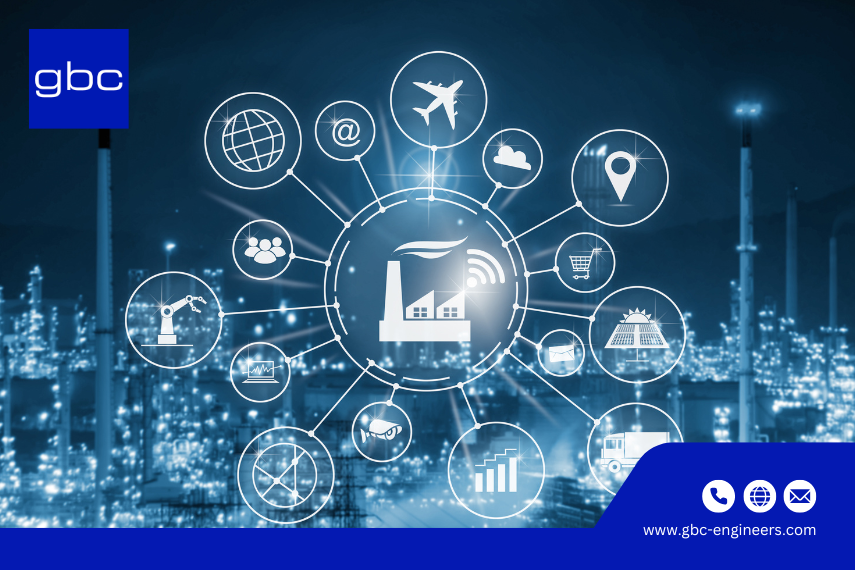Explore cutting-edge data center technologies and sustainable infrastructure solutions powered by gbc engineers, a leader in structural engineering and innovation for the digital age.
Emerging Technologies in Data Centers

Server Virtualization: Creating Agile and Scalable Infrastructure
Company in Focus: VMware
Server virtualization is the process of converting physical data centers into digital, cloud-managed environments. Through platforms like VMware, enterprises and companies in the data center industry can create fully virtualized infrastructures that offer dynamic scalability, improved uptime, and better utilization of IT resources, enhancing both privacy and security in the process.
This transformation is increasingly important as the industry responds to new demands from AI, real-time events, and high-density applications that require not only efficient infrastructure management but also advanced cooling solutions to prevent overheating and ensure consistent system performance.
Key Benefits:
- Reduces dependence on physical hardware
- Enhances disaster recovery and system backups
- Supports hybrid cloud environments
- Improves IT agility and scalability
Read More: Rechenzentrums-Server: Trends & Innovationen 2025 - gbc engineers
Automation: Enhancing Efficiency and Reducing Downtime
Company in Focus: UiPath
Data center automation involves using software to manage routine tasks such as configuration, monitoring, backups, and patching. UiPath, with its Automation Cloud platform, empowers IT teams to automate complex workflows, integrate with AI models, and streamline operations across hybrid environments—all while strengthening security and operational resilience.
Key Benefits:
- Reduces manual errors
- Increases uptime and responsiveness
- Frees IT staff to focus on innovation and power strategic initiatives
- Integrates easily with existing infrastructure, acting as a guide toward seamless digital transformation
By automating repetitive workloads, data centers become more resilient, efficient, and responsive to real-time demands. This is especially important for sectors like finance, healthcare, and e-commerce, where uptime, security, and operational efficiency are critical.
5G: Powering Next-Gen Edge and Cloud Solutions
Company in Focus: Intel
With the rise of distributed computing, data centers are increasingly integrating 5G networks to ensure low-latency, high-speed data transmission. Intel is a pioneer in 5G innovation, developing technologies that enable real-time processing from core to network perimeter, empowering IT teams to deliver smarter infrastructure and enhanced connections.
Key Benefits:
- Enables ultra-low latency (<1ms)
- Supports IoT, AI, and distributed computing applications
- Boosts bandwidth and throughput
- Enhances remote access, smart device connectivity, and cloud data performance
As demand for cloud-native applications and real-time analytics grows, the convergence of 5G and distributed architectures is helping organizations deliver cloud data services faster and more reliably bridging the gap between users, devices, and data center teams.
Want to explore how your organization can leverage these top data center technologies in 2025? Let’s talk! Kontakt - gbc engineers
Intelligent Monitoring: Enabling Predictive Maintenance
Company in Focus: ABB
Intelligent monitoring involves the use of AI-driven tools and IoT sensors to gather and analyze real-time operational data across the entire data center ecosystem. ABB’s digital solutions offer deep visibility into every component, enabling predictive maintenance and better energy management.
Key Benefits:
- Real-time fault detection and alerts
- Optimized energy usage and thermal control
- Data-driven decision-making
- Lower OPEX through preventative strategies
By transitioning from reactive to predictive operations, data centers can maximize uptime, reduce failures, and extend asset life cycles, ensuring smooth operations even as complexity increases.
Renewable Energy Integration: Building Sustainable Infrastructure
Company in Focus: Ark Data Centers
With sustainability at the forefront, data centers are under pressure to transition to renewable energy sources such as solar, wind, and geothermal. Ark Data Centres has been a leader in this area since 2005, designing data center infrastructure powered by 100% renewable electricity. Their team focuses on creating innovative, future-proof solutions, including sustainable colocation services for clients across industries.
Key Benefits:
- Reduces carbon footprint and energy costs
- Improves ESG performance and compliance
- Minimizes reliance on fossil-fuel grids
- Enhances long-term business resilience
Networking Technologies in Data Centers

Switching: The Heart of Data Transfer
Data center switches are responsible for managing internal traffic and connecting multiple devices in real time. These high-performance switches provide the backbone of modern data center networks, enabling high-speed, low-latency communication.
Key Features:
- Support for multi-terabit throughput
- Advanced routing protocols
- Integration with virtual environments
- Scalability for large data loads
Switching ensures efficient packet forwarding and is essential for virtualization, AI, and real-time applications that require seamless communication between servers.
Routing: Efficient Data Flow Management
Data center routing involves determining the optimal path for data packets within a network. In complex data centers with thousands of nodes, routing ensures efficient and reliable delivery of information across multiple servers and locations.
Key Features:
- Load-sensitive path selection
- Redundancy and failover management
- Adaptive routing for real-time performance
- Minimal network latency
Advanced routing helps organizations cope with software and hardware failures, reducing data bottlenecks and improving network resilience.
Read More: Datenzentrum-Dienste erklärt: Arten, Bedeutung und Trends im Jahr 2025 - gbc engineers
Load Balancing: Optimizing Performance Across Servers
Load balancing distributes workloads evenly across servers to prevent overloading and reduce latency. It also redirects traffic to the nearest or most responsive server, ensuring consistent and optimized performance.
Key Features:
- Traffic distribution for peak times
- Improved fault tolerance and redundancy
- Scalability for cloud environments
- Enhanced user experience and application performance
This technology is critical in today’s multi-region, cloud-first environments, where uptime and responsiveness are top priorities.
Access Switches: Connecting Devices at the Edge
Access switches are responsible for connecting end-user devices and edge servers to the broader network. Although they typically offer lower throughput per port, they play a vital role in handling localized traffic at the data center’s edge.
Key Features:
- High port density for client devices
- Simplified network segmentation
- Cost-effective deployment
- Flexible configurations for growing environments
Access switches allow for faster provisioning, making them ideal for smart buildings, campuses, and remote data collection nodes.
Ethernet Fabrics: Enabling Scalable and Secure Data Movement
Ethernet fabrics are virtualized overlay networks designed to simplify and secure data transport across complex infrastructures. Cisco defines them as automated lattices that provide seamless, policy-driven communication across wired and wireless systems.
Key Features:
- Improved traffic isolation and segmentation
- Faster east-west traffic performance
- Centralized management and automation
- Uniform policy enforcement across devices
These fabrics support AI, storage, and cloud-native workloads, lowering risk by limiting traffic propagation and improving overall security posture.
Ready to Future-Proof Your Data Center?
Partner with gbc engineers to design a facility that delivers performance, reliability, and long-term value.
🌐 Visit: www.gbc-engineers.com
🏗️ Explore Our Services: Services - gbc engineers
Conclusion
As we move deeper into 2025, the data center technologies is redefining the modern data center. Coupled with advanced networking technologies like load balancing, Ethernet fabrics, and smart routing, the data center is evolving into an intelligent, adaptive, and green ecosystem.
To stay competitive in the digital age, businesses must invest in these transformative technologies, align with sustainability goals, and future-proof their infrastructure against ever-growing data demands.
As the digital world accelerates, partner with gbc engineers to build future-ready data centers that optimize performance, reduce carbon impact, and empower global connectivity.